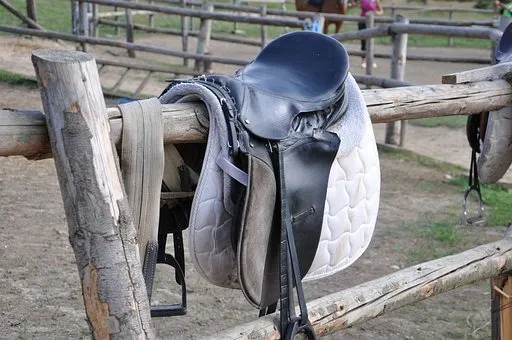Quick Tips to Repair a Horse Saddle All by Yourself!

Some brand-new English and Western saddles cost thousands of dollars or more. As a result, riders prefer learning DIY saddle-repairing tips and tricks rather than buying a new one immediately. If you have the necessary tools and expertise, you can repair any type of saddle regardless of the horse saddle material.
Let’s see how you can repair a horse saddle at home with budget-friendly options.
How To Repair a Horse Saddle by Yourself?
- Start by cutting the edges of the ripped stirrup leathers off squarely and uniformly using your knife. Keep the working edge as clean as you can while removing the least amount of leather.
- Use your shears to cut a piece of thick harness leather. Cut the leather with enough additional material to allow setting rivets and to cover the ripped region of the stirrup leather.
- Around the edge of the harness leather patch, drill at least four holes that are equally spaced apart.
- Lay the harness leather patch over the ripped stirrup leather, making sure that it completely encloses the patch. Using a marker, annotate the stirrup leather with the positions of the holes in the harness leather patch.
- Punch holes in the stirrup leather where the marking has been placed using your hole punch.
- Reattach the stirrup leather to the harness leather patch so that the punched holes line up. Incorporate the copper rivets’ male portion into the holes.
- On your rivet setting anvil, place the base of the copper rivet’s male portion. Overlap the male end of the copper rivets with the female portion.
- Set the copper rivet’s rivet setter above the female portion of the male portion. To set the rivet, tap the rivet setter on the end with a mallet.
- Cut off the end of the male portion of the rivet using your wire nippers. To peen the end and prevent the female portion from coming off, tap the cut-off end with the head of your ball peen hammer. Repetition is necessary to complete the harness leather patch’s rivets.
Here’s a Bonus Tip:
To make the harness leather patch fit like the original stirrup leather, trim the edges with your shears. This will stop the patch from unintentionally galling the horse’s sides while you’re riding.
Moreover, you might potentially save some money by purchasing horse saddle material and tack online that is being offered at a discounted price.
The Bottom Line: Repairing Horse Saddle Material & Tack
If your tack cannot be fixed, admit it. Billets that have started to tear from hole to hole, any leather that is cracking or straining, and stirrup leathers that have stretched to the point of being two different lengths are all things that are probably best replaced than fixed.
When contemplating DIY saddle repairs, go with caution. It is typically simpler and not always more expensive to have your tack repaired. Hence, stick to non-essential minor alterations, such as poking holes, adding finishing touches, and affixing saddle strings, if you want to do your own job.
